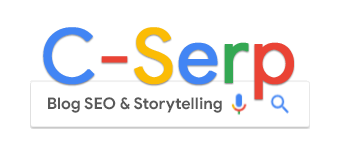Lead gen PPC: How to optimize for conversions and drive results

Whether you’re under pressure to build lead volume or want to get ad campaigns out of a “status quo” rut, conversion rate is a vital metric to monitor across campaigns, platforms, and backend data.
When approached correctly, improving conversion rates can help to drive more qualified leads at a more efficient cost.
This article tackles:
- The process of creating a plan for conversion rate optimization.
- The levers you can pull both on the ad platform end and outside of it.
Ensure clean conversion tracking
Before trying to improve performance, make sure you are accurately tracking relevant conversion actions for your campaigns.
Optimizing with bad data does more harm than good.
If you’ve set up conversions through Google Tag Manager, use Preview Mode to walk through actions like form submissions and ensure your tags are firing correctly.
You should also check your ad platforms to confirm that conversions or events are being recorded as expected.
Avoid triggering conversion actions at the wrong time, such as on a button click instead of a successful form submission, especially if your setup allows you to track completed submissions accurately.
Also, make sure data flows properly into your CRM or marketing automation platform so you can attribute leads correctly during follow-up.
At a minimum, use consistent UTM parameters.
If possible, integrate platforms like Salesforce or HubSpot to ensure you’re capturing the most complete data set.
Map out conversion priorities
Lay out the conversions you are tracking and determine which have the highest priority. For instance, a lead nurture sequence may include early, mid, and late touchpoints depending on the action.
- Early touchpoints might include downloads of informational resources, i.e., whitepapers.
- Mid-touchpoints might include registrations for industry-specific webinars.
Finally, late touchpoints might include product demos and requests to talk to sales.
Set benchmarks
If you have enough existing data, look at:
- The average conversion rates between touchpoints on the sales journey.
- The overall conversion rate to the point of becoming a paying customer.
Earlier touchpoints, which require less lift from the prospect (e.g., downloading a whitepaper), will likely have higher conversion rates than later touchpoints (e.g., setting up a call with a salesperson).
One key thing to remember is that every business is unique, and “industry benchmarks” may not be applicable for your individual situation.
Look at your own existing conversion rates and set realistic goals for improvement, instead of trying to achieve an arbitrary conversion rate aggregated from your industry as a whole.
Ad platform levers
In an increasingly AI-driven PPC world, the levers you can directly pull within ad platforms are decreasing.
Still, there are many areas where you can have an impact within your campaigns. Here are a few.
Ad copy
Testing tweaks to ad copy can be one of the more impactful changes for conversion rate, involving anything from slight wording changes to highlighting different offers.
If you want a true test, you can use Google’s Ad Variations feature to generate ad variants with alternate copy or URLs while controlling the experiment split.
Imagery
If you’ve been using the same imagery for the past year, refreshing your creative can go a long way toward improving conversion rate.
You can:
- Replace stale creative and monitor before/after changes.
- Compare ad groups with different creative sets.
- Run an experiment for a cleaner comparison.
Audience targeting
Test whether different audience segments respond better to your messaging by leveraging the wide range of targeting options available.
For example, in a Demand Gen campaign, you might compare a Lookalike audience based on current customers to an in-market audience related to your product.
Use Google Ads Experiments to set up a controlled test and compare performance between the two.
Bid strategies
Switching to a different bid strategy can be an effective test to see if you can achieve a better conversion rate for qualified leads.
For example, if you currently weight all conversions equally in Google Ads – regardless of their stage in the sales cycle – using a bid strategy like Maximize Conversions, the system is likely biased toward early-stage conversions.
These early conversions are good for getting people in the door but tend to be less valuable long term.
Test value-based bidding, such as Maximize Conversion Value, where you assign values to each conversion type based on their priority.
This lets you target conversions across the purchase funnel while placing more weight on those more likely to result in a sale.
You can assign actual values based on your customer data or set relative values depending on the sales process stage.
External levers
While you can make several changes on the ad platform side to improve conversion rates, much of the customer journey happens after the click.
You will likely need buy-in from partners to influence these areas, but these changes can be crucial.
Landing page
Many well-managed PPC campaigns drive traffic from well-targeted users but fail when the landing page experience is subpar.
Quick improvements can include:
- Clarifying confusing messaging.
- Reducing unnecessary form fields to lower friction.
- Fixing technical issues like poor mobile usability.
Offers
Even the best PPC campaigns can’t save a weak offer that doesn’t stack up against competitors.
Sometimes, you may need to highlight areas such as pricing or features that don’t match what prospects see elsewhere.
Or maybe your current offer performs well, but you want to test if tweaking it can improve conversion rates. For example, leading with a promo to schedule a demo.
Follow-up processes
Customer consideration can take weeks, months, or even years, depending on the business.
Clear and consistent follow-up after form submissions can go a long way toward nurturing relationships with interested prospects.
Ensure your CRM or automation platform sends relevant emails after a lead form is completed.
Also, train sales teams to promptly reach out to leads who may be ready to engage.
When a higher conversion rate isn’t the goal
As a caveat, there are situations where increasing conversion rate is not the ultimate goal.
For instance, you might generate more leads through deep discounts, but that may not foster long-term customer relationships.
Or in B2B campaigns struggling with lead quality, tightening messaging, targeting, and landing pages to filter out low-quality prospects may be more valuable than simply increasing lead volume.
When tasked with increasing qualified leads, always consider which tactics best support your brand’s goals.
In many cases, higher conversion rates improve efficiency and increase lead volume.
However, in some cases, it’s important to resist a “higher conversion rate at all costs” mindset.
Final thoughts
Take time to assess your PPC campaigns, goals, and where conversion rate improvements will help most.
Work through ensuring proper tracking and measurement, then create a plan to adjust what you can influence.
Finally, be prepared to share results with your stakeholders as they come in.


